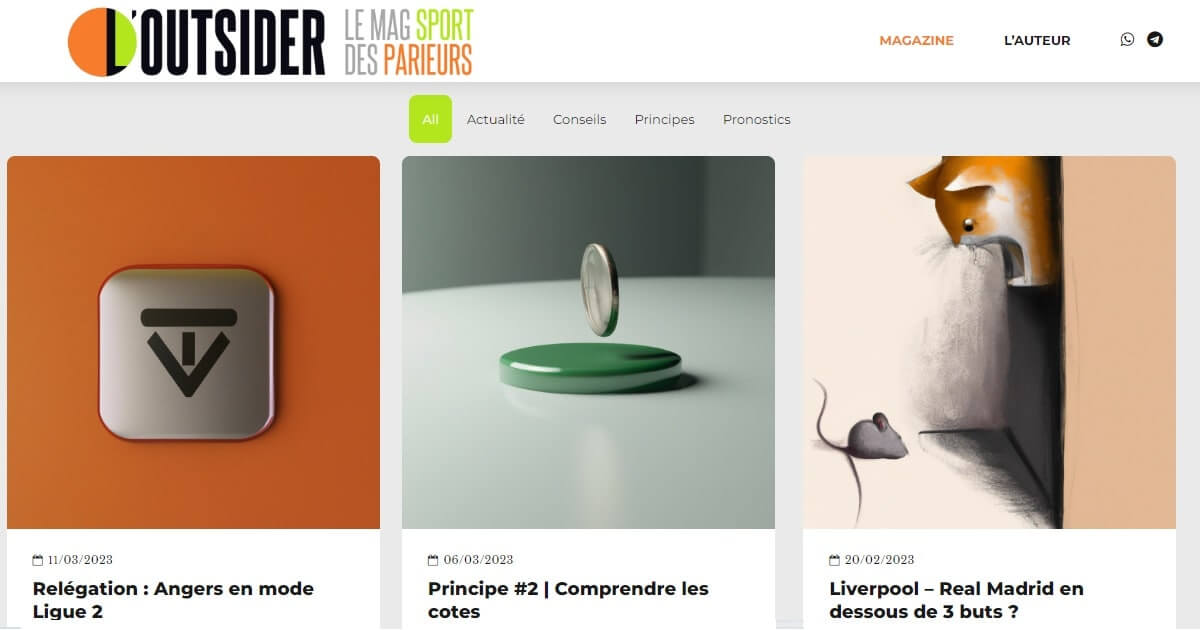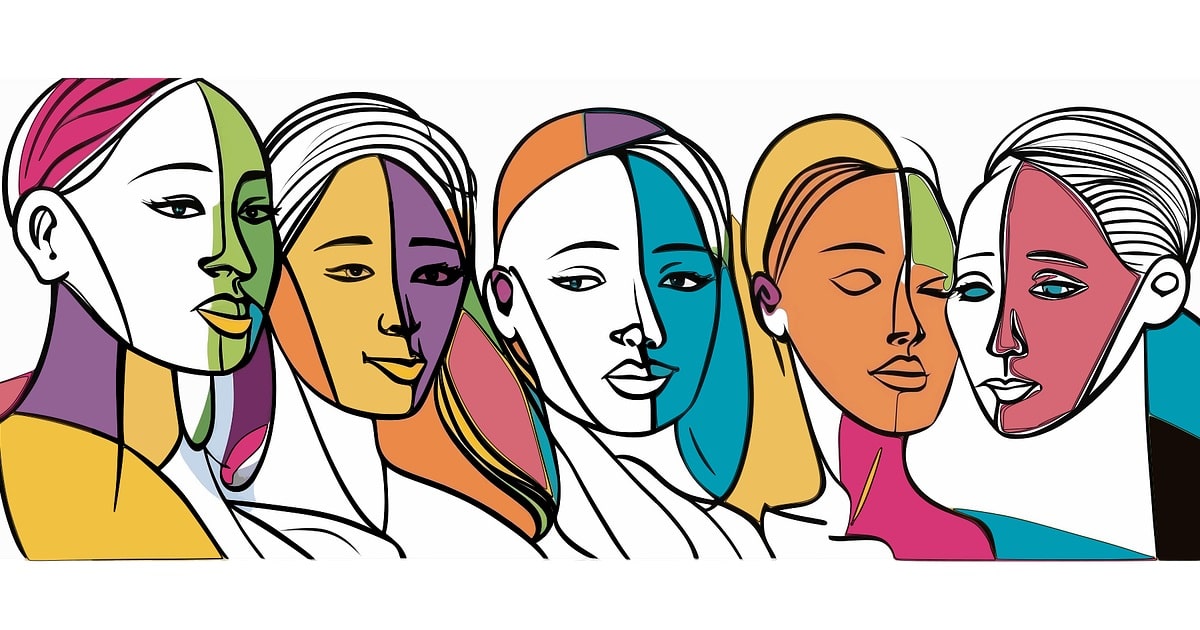Management and development of brand and content for French sports digital magazine L’Outsider.
Market research, branding and commercial content development for sports AI data platform Creuniq.
Uncliched led the content marketing and PR effort in four languages for email security firm EasyDMARC.
Strategic market research and branding to pivot and rebrand digital SB invest as ScoreBoss.
For a technology business, engaging French-speaking markets can be as exciting as munching on croissants while riding a unicorn through Paris. Here’s what you need to know!
France: the heavyweight champ of the french tech market
If artificial intelligence had a favorite vacation spot, it would likely be France. Not only is this country renowned for its wine and cheese, but also for being an artificial intelligence hub. The French government has showcased remarkable dedication to AI, investing billions into research and development. It’s almost like they’re trying to invent robotic sommeliers or something. For any tech business looking to set up shop in France, there are countless business growth opportunities. From smart cities to advanced healthcare, France is diving headfirst into a future reminiscent of Asimov’s wildest dreams, minus the dystopia, hopefully.
Digital marketing in France
Sure, digital marketing everywhere else might seem like child’s play compared to digital marketing in France. Crafting campaigns that resonate with the French audience requires savvy marketers and significant knowledge of local culture and language quirks. Trust me, if you don’t get your “voulez-vous” in the right place, it could spell disaster. Also, don’t forget about French language skills! The nuances in the French language can make or break your connection with the audience. Politesse is key here; lacking basic manners can quickly turn potential customers into ardent haters.
Belgium: small country, big potential
Ah, Belgium. Known for its waffles, chocolates, and surreal sculptures, it’s also brewing quite the start-up ecosystem. Despite being small in size, Belgium packs one heck of a punch when it comes to technology businesses. Entrepreneurs are swarming like bees around a honeycomb, all buzzing with innovative ideas and unmatched zeal.
The capital city Brussels, often dubbed the heart of Europe, isn’t just about bureaucracy and politicians—thank goodness for that. It’s emerging as a focal point for tech startups and venture capital funds, making it an attractive destination for any tech visionary on the lookout for new pastures.
Market entry strategies
However, engaging in Belgium, like anywhere else, requires ingenious market entry strategies. Given the diversity in language and culture, your entry game has to be top-notch. Speaking of which, learning some quick Dutch phrases wouldn’t hurt either; multilingual ability can win hearts faster than you say “frite”. Moreover, understanding the difference between Wallonia (the French-speaking region) and Flanders will ensure smooth sailing. Tailoring your approach based on these regional traits will make sure your tech baby isn’t left out in the cold.
Switzerland: where innovation meets precision
Switzerland, land of watches, chocolates, and knife precision—both literally and metaphorically speaking. For a tech-savvy business mogul, this country offers a wealth of venture capital funds. With Zurich and Geneva leading the way, Switzerland wraps innovation in luxury, making financers swoon just at the thought of your next big idea. Swiss people are happy to bolster your tech endeavors, provided you show knack and commitment. So why not align with their unwavering love for cuckoo clocks but replace them with cutting-edge IoT devices? If you nail that Swiss precision, you’ll go places!
Despite the occasional neutrality and savoir-faire, mergers and acquisitions in France can find their partners in Switzerland with surprising ease. Just imagine lucrative collaborations across Lake Geneva—the adorable tech twins bridging Francophonie and Käsespätzle in perfect harmony. Revolutionizing finance tech or adulting in pharma innovations, the Swiss flair for meticulousness ensures that your collaborative ventures won’t implode halfway through.
Canada: French-speaking tech is booming up North!
If there were an MVP award for francophone countries, Canada—with its double whammy of English and French proficiency—would raise the trophy sky-high. Specifically, the Province of Québec exuberantly waves the flag for French-speaking tech enthusiasts. Montréal’s tech scene is hands down, chef’s kiss good. Companies keen on throwing their lot in Montréal can bask in exceptional support programs, tax credits, and a dynamic startup environment driven by university talent and a never-ending appetite for creativity.
Nevertheless, deploying market entry strategies over yonder Quebecois landscape needs mutual respect for cultural inclinations. Make sure you can toggle between saying “Sorry!” in both languages because politeness, my dear Watson, is essential everywhere in Canada. Of course, mixing Canada’s distinct hospitality with grit-turning technological pursuits creates fertile ground for weirdly wonderful inventions. Why put things simply when they can be beautifully complex?
DRC: an untapped techno-potential
Bet you didn’t see this one coming! Yes, business growth opportunities abound even within Africa’s beating heart: the Democratic Republic of the Congo. We’re talking about the largest French-speaking country in the world. Tech firms must harness an innate pioneering zest to plunge confidently into DR Congo’s vast prospects. With Wi-Fi reaching far-off corners and mobile banking becoming the norm, tapping into this latent powerhouse could earn one monumental bragging rights. Spreading technology here equates to accelerating modernization—a journey none should underestimate.
Securing venture capital funds in DRC may resemble Indiana Jones-esque treasure hunts amidst dense jungles. But that’s where colossal rewards lie. Innovative solutions tailored for local socio-economic contexts can inspire radical transformations. You’d bridge gaping infrastructural gaps with nothing more than sheer willpower—and functioning gadgets. Voilà; stacks up a promising fantasy for any conceivable Dakar-to-Kinshasa roadmap!
Ivory Coast: turmeric-flavored tech bliss
The Ivory Coast might first invoke images of opulent cacao pods, but beneath lies an electrifying startup pulse. Urban centers, particularly Abidjan (dubbed little Manhattan), bubble with possibilities awaiting those audacious enough to invest in novel tech paradigms. Riding Côte d’Ivoire’s technophile wave warrants balancing finesse akin to navigating praline-filled éclairs without splattering yourself sticky. Hence establishing collaborative networks becomes indispensable towards hyping profound impact narratives.
One word folks rarely associate beyond tourism realms vis-à-vis Ivory Coast encompasses ‘Digital’. Therefore, any low-hanging fruit reaped from digital marketing escapades implies substantial social mobility improvements against formidable odds. Lending platforms additionally extend news-worthy dividends uplifting SME ecosystems effectively; enabling digits transforming traditional bazaars guarantees progressively glossier headlines intermittently spewing zesty tales guaranteeing media frenzies 24/7.
Image: Clay Banks
The Organisation Internationale de la Francophonie (OIF) may sound like a fancy club for French speakers, but this group carries an economic and cultural punch that hits far beyond the French language. Let’s see how this works.
Francophonie : geography and members
Though it started as a club for former French colonies, membership has exploded faster than a Parisian bakery at breakfast time. Today’s lineup includes 88 states and governments, with observers from countries you’d think never even dreamt of saying “bonjour”. From Canada to Cambodia and Burkina Faso to Belgium, it’s like a global Francophile cocktail party where everyone’s speaking French but faking their accents.
This geographical hodgepodge has created rich opportunities for interaction, boosting cultural exchange, trade, and geopolitical alliances. It’s a microcosm of how global connections can be tightened through a shared love of croissants—or should I say, the French language.
History of the Organisation internationale de la Francophonie
Ah, the late ’60s—what a time to be alive. Amidst all the political uproar and shifting sands of colonial after-effects, the Organisation internationale de la Francophonie was born in 1970. Initially, it felt more like an exclusive alumni association for nations tutored by France. However, much like quality wine, it has grown stronger and more refined over time. Time-travel back to its inception, and you’d see it focusing narrowly on promoting the French language. Fast forward to today, the OIF flaunts a diversified portfolio including education, economy, and even science and technology. Perhaps they realized being a single-issue club was so passé.
Global reach and regional scopes
Forget Paris for a moment. The OIF isn’t confined to France’s borders or even Europe’s. You’ve got parts of Africa, North America, Asia, and the Caribbean all chiming in with their accents. Seriously, it’s like a world’s fair where only one thing matters: speaking French. But the twist here is how these regions leverage their connection to the OIF.
African countries, for instance, tap into both economic and cultural cooperation. Some might think colonial pasts are tricky, but not when you work with a progressive mindset and add mutual interests into the mix. It’s a tango, folks, and money talks—the sort of dance partners who would rather exchange wallets over words. And then there’s Canada, a committed member with clear goals and perspectives, that uses the platform for digital innovations and pushing other countries toward modern-day efficiency. It’s not all about poutine and politeness; they’re out to boost their international trade routes.
The Francophonie economical weight
While not competing with economic juggernauts like the EU or NAFTA, the OIF carries its own economic clout. With member states scattered across multiple continents, it’s like a miniature United Nations with a cultural diversity twist. Speaking French suddenly provides advantages more tangible than merely understanding Edith Piaf’s lyrics.
Trade relations within this circle flourish under the veneer of mutual respect and shared values. A dollar earned between Francophonie members seems to stretch a little further, thanks to lower tariffs and bilateral agreements. Ah, money does talk—but in this case, it chit-chats in French.
Geopolitical influence
Noticeably, the OIF often plays the role of peacekeeper, tackling crises with the finesse of a well-read diplomat. They’ve shown a knack for deploying peacekeepers or facilitating diplomatic dialogues in hotspots forgotten by the more headline-grabbing agencies. Bolstered by their mantra of democracy promotion and gender equality, they become unexpected champions for justice in politically turbulent regions. The organization isn’t just playing Scrabble tournaments; it has some real accomplishments under its belt.
Over the decades, they’ve launched initiatives for educational support, promoted linguistic diversity, and have been vocal advocates for human rights and democracy promotion. In certain places, their contributions have been significant enough to earn them brownie points from locals and internationals alike. Moreover, their synergistic approach towards sustainable practices makes them influencers in the arena of sustainable development. The somewhat low-profile yet orchestrated handling of environmental issues adds feathers to their cap that larger organizations miss out on. You know, saving humanity from itself, one green initiative at a time.
Growth perspective
Living the high life isn’t just reserved for the select elites. Dig a bit deeper into the OIF dynamics, and you’ll find fertile grounds for growth exploiting multilateral partnerships, burgeoning industries, and next-level educational programs reaching beyond ivory towers. Globalization has never been so chic.
Member states lean heavily on each other for expanding industries ranging from agriculture to quirky new tech startups. Remember, it’s not about competition—it’s collaboration! If there’s a region teeming with untapped natural resources, collaborative teams swing by and transform challenges into thriving sectors. Trade missions turn fledgling ideas into robust commercial enterprises, proving once again that many hands make light work.
Sustainable development
OIF isn’t blindly corporate, either. Projects championing sustainable development gain traction, blending green tech innovations with traditional economic activities. Community-focused initiatives pave ways to blend modernity without erasing local cultures. These efforts cover realms often ignored by mainstream entities that prefer fast returns. Green energy technology adaptation primarily thrives among African continental zones, whereas landscape preservation aligns tightly with South Pacific regions.
Photo source






